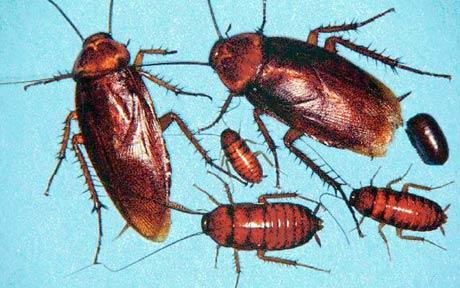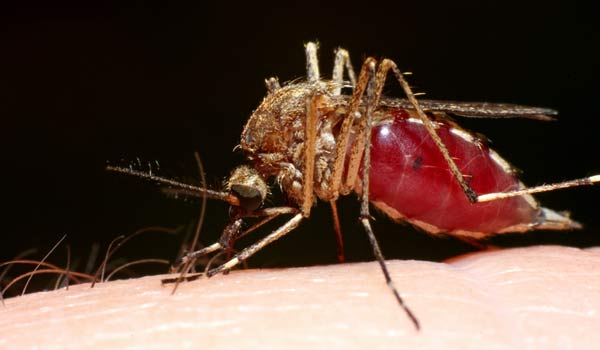
© Unknown
Can you sleep away pounds? Well, not exactly, but research has shown that people who sleep a good eight hours-plus are more likely to maintain a normal weight than those who sleep less than eight hours a night. Now, a new study finds that even for infants and preschoolers, a good, long night's sleep may be just as important as diet and physical activity.
Over the past three decades, obesity rates have doubled among children age 2 to 5, and tripled among 6- to 11-year-olds. So University of Washington maternal and child health researcher Janice Bell wanted to know whether sleep had anything to do with it.
She looked at federal data collected on nearly 2,000 children and compared those who slept 10 hours or more a night with those who slept less. She also looked at how much the children weighed over a five-year period. The most striking findings had to do with infants and toddlers. The study appears in the
Archives of Pediatrics and Adolescent Medicine."They were nearly twice as likely to move from normal weight to overweight, or overweight to obese in that five-year period," she says.
Mark Morales and Rich Schapiro
NY Daily NewsSun, 05 Sep 2010 20:30 UTC

© Dazeley/GettyMore than 250,000 students in New York City were found to be too heavy
A shocking number of young city students are overweight or obese - with about half the youngsters in some zip codes tipping the scales too heavily, a new city report shows.
In the largest study of childhood obesity ever conducted in the city, 40% of kindergartners through eighth-graders - more than 250,000 kids - were found to be too heavy.
Officials say even though the data seem startling, the rate of obesity in city kids is actually flat-lining, while it's rising nationwide.
"While it would be great if we saw the numbers go down, it is encouraging that they're holding steady," said Laurie Benson, executive director of the Department of Education's Office of School Wellness, refering to previous studies with smaller sample sizes.

© ReutersHow they compare: The larger fish is the GM salmon (24in in length and 6.6lb) and the Farm salmon (13in in length and 2.8lb)
Genetically modified salmon, which grows at a superfast rate, is safe to be farmed and eaten, American scientists have declared. The move by experts advising U.S. watchdogs will clear the way for the first GM creature to be sold as food.
The first GM salmon could be on American dinner tables within two to three years, and possibly on British plates soon after that, paving the way for the genetic modification of other fish and food animals into what critics are calling 'Frankenfood'.
Shares in the company behind the technology leapt by 26 per cent on the London Stock Exchange on Friday, providing evidence that analysts see GM as the future of fish production.
However, the science is highly controversial and consumers will have questions about the impact on human health and the environment.
A second look at British registry data indicates that esophageal cancer may be more common after all in patients taking oral bisphosphonate drugs for long periods.
In a nested case-control analysis involving some 80,000 patients tracked for more than seven years on average, individuals diagnosed with esophageal cancer of were 1.93 times as likely (95% CI 1.37 to 2.70) to have received at least 10 prescriptions for oral bisphosphonates, compared with controls not having cancer, reported Jane Green, MD, DPhil, of the University of Oxford in England, and colleagues online in BMJ.
The likelihood of receiving at least one bisphosphonate prescription among esophageal cancer patients was 1.30 (95% CI 1.02 to 1.66) relative to controls, the researchers found.
The findings were especially remarkable because another research group conducting a case-control study of the same registry -- Great Britain's General Practice Research Database, containing records on some six million patients -- recently reported no increase in esophageal cancer rates in patients treated with bisphosphonates.

© Associated Press
E-coli,
scientists have discovered.Scientists at Nottingham University found that the insects, which are widely reviled for their dirty image, could actually be more of a health benefit than a health risk.
They have identified up to nine different molecules in the tissues of cockroaches and locusts that are toxic to bacteria and they hope will pave the way for new treatments for multi-drug resistant bacterial infections.
The tissues of the brain and nervous system of the insects were able to kill more than 90% of MRSA and
E.coli bacteria, without harming human cells.
Are you feeling tired, suffer from sleepiness, depression, increased irritability, unexplained aches and pains, headaches, skin rashes, ringing in the ears, numbness, an irregular heart beat, increased blood pressure or a foggy brain?
If so, you may be suffering from "Electrosensitivity". Dr. Magda Havas, a renowned international expert on electromagnetic radiation (EMR), says "dirty electricity" is a growing worldwide health concern.
Today, few of us would want to discard our electronic devices. But I never realized how modern electrical gizmos generated so much dirty electricity.
Dr. Havas says clean electricity originally powered our homes and workplaces, using a safe frequency of 60 Hertz (Hz). Today, transformers convert 60 Hz to low-voltage power for electronic devices. This creates micro surges of dirty electricity that contain up to 2,500 times the energy of a conventional 60 Hz electrical system. In effect, we've created electrical pollution, a contamination that's not good for us.
I discovered it's easy to get fooled by dirty energy if you're not an electrical engineer. For instance, our home has several dimmer devices. I naively believed this was a prudent move, but these devices, along with fluorescent lights, energy saving light bulbs and electrical entertainment centres and computers, generate dirty electricity. In fact, they generally emit more electromagnetic exposure than power lines.
If you want to get a major dose of dirty electricity, use a hair dryer. This device uses up to 500 times more dirty EMR than microwave ovens, electric ranges and washing machines.

© Unknown
U.S. Food and Drug Administration recently received more than 180,000 hand-delivered letters from citizens concerned about proposed FDA action on antibiotic use in animals. These concerned citizens represent people who see a connection between the use of antibiotics in animal agriculture and an increase in human resistance to the same life-saving drugs. The letters were delivered on the eve of the Aug. 27 cut-off date for public comment on the issue.
A broad coalition of organizations encouraging new FDA regulatory guidelines collected and delivered the letters. The groups include the Center for Food Safety; Center for Science in the Public Interest; CREDO Action; FamilyFarmed.org; Farm Aid; Food & Water Watch; Food Democracy Now!; The Humane Society of the United States; Organic Consumers Association; and Union of Concerned Scientists. A press release from the Center for Food Safety describes these organizations as "committed to saving antibiotics as pillars of public health in the United States."
Many consumer advocates and health professionals agree that the widespread use of antibiotics in animals intended for human consumption may have contributed to a spike in human antibiotic resistance. In mid July, Dr. Joshua Sharfstein, Deputy Commissioner of the FDA, testified before Congress on the issue of antimicrobial resistance.
"FDA concludes that the overall weight of evidence available to date supports the conclusion that using medically important antimicrobial drugs for production purposes is not in the interest of protecting and promoting the public health," he explained. "Developing strategies for reducing antimicrobial resistance is critically important for protecting both public and animal health."
Practicing yoga may do more than calm the mind - it may help protect against certain diseases, a new study suggests.
In the study, women who had practiced yoga regularly for at least two years were found to have lower levels of
inflammation in their bodies than did women who only recently took up the activity.
Inflammation is an
immune response and can be beneficial when your body is fighting off infection, but chronically high levels of inflammation are known to play a role in certain conditions, including
asthma,
cardiovascular disease and depression.
Inflammation is known to be boosted by stressful situations. But when yoga experts were exposed to stress (such as dipping their feet in ice water), they experienced less of an increase in their inflammatory response than yoga novices did.
"The study is the first one, I think, to really suggest how yoga could have some distinctive physical benefits in terms of the immune system," said researcher Janice Kiecolt-Glaser of Ohio State University. "It suggests that regular yoga practice is really good for you." she told LiveScience.

© unknown
has long been promoted for its role in brain and heart health. Now, scientists have a clearer picture of how the omega-3 fatty acids in fish oil work to reduce chronic inflammation in diabetes patients.

© DreamstimeA newly identified compound that can kill the malaria parasite might one day serve as a new drug to treat the disease. Malaria is responsible for nearly 1 million deaths each year, mostly among children in sub-Saharan Africa. It is caused by a parasite and transmitted by a mosquito.
A newly identified compound kills the malaria parasite well before it creates major health problems within an infected person, a new study finds. It might one day serve as a new drug to treat the infectious disease.
Malaria is responsible for nearly 1 million deaths each year, mostly among children in sub-Saharan Africa, according to the Centers for Disease Control and Prevention. New treatments for
malaria are urgently needed because the current class of drugs use to treat the disease, known as artemisinins, are becoming less effective as the parasite develops resistance to them.

